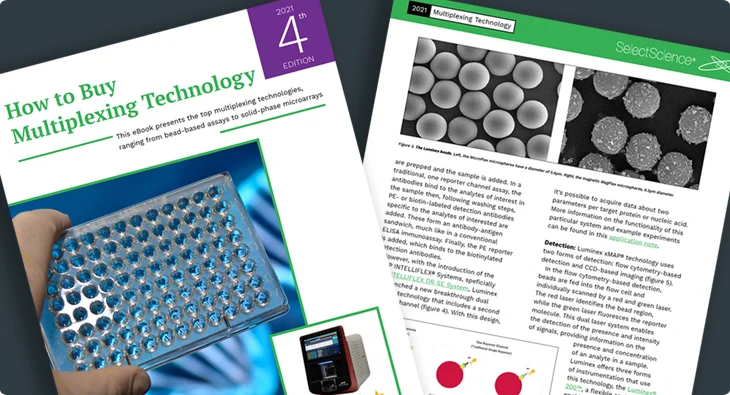Buyer’s Guide: How to Choose the Right Multiplex Technology for Your Needs
Confused by the wide selection of multiplexing options? This eBook can illuminate the differences between them to help you make an informed decision
[thumbnail]
As anyone who has worked in a lab knows, most scientists eventually reach a breaking point when it comes to singleplex immunoassays. Especially when other options, particularly multiplexing, make it possible to generate more data—quickly and at lower cost—all while consuming less sample. But once you experience your “I’ve had it up to here with single-analyte assays!” moment, what’s next?
We’ve got you covered
We just released the fourth edition of Select Science’s buyer’s guide that covers all things multiplex. It’s an educational (not promotional) resource where the authors break down which types of experiments are best suited for multiplexing, how different multiplexing technologies work, and how to determine which option is the best fit for your needs.
Resources like this are important because there are so many multiplexing options to choose from: spotted arrays, bead arrays, microfluidic reactions, and more. The guide explores the details of each—how they work, which chemistries they use, and key applications, among other features—to help you make sense of the choices available without having to dig through the literature for weeks.
For example, included is SMARTS tool for comparing products and choosing the multiplex technology that best suits your needs:
- Sensitivity: Can the multiplexing assay detect low-abundant analytes, especially after dilution?
- Multiplexibility: Once you’ve performed your single analyte measurements and established an assay range, does the platform offer multiplexing capabilities? If so, what is the plex number?
- Actionable results: Can the assay provide you with results you can use, (i.e., within the assay range even with small sample volumes)?
- Reproducibility: Does the assay yield reproducible results for multiple users?
- Time to results: How long does it take to read a 96-well plate in the multiplexing system of your choice? If you were to perform triplicates or increase the number of analytes, does the technology guarantee minimal need for repeat runs so you can save time?
- Specificity: How specific is the antibody pair to your protein of interest? A specific detection only recognizes the analyte of interest and no other analytes or antibodies.
For more insight and an in-depth breakdown of the options out there, check out the “How to Buy Multiplexing Technology” eBook (2021, 4th edition)!
Download and read the “How to Buy Multiplexing Technology eBook”
For Research Use Only. Not for use in diagnostic procedures.
Related Content
- xMAP Cookbook [Download]
- xMAP Kit Finder: Filter by analyte, species, and vendor [Webpage]
- Multiplex Bead Mix Calculator [Download]

